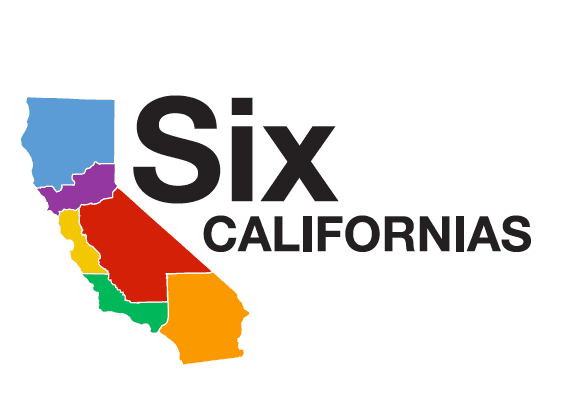Any way you slice it, California is huge: it’s the most populous state in the nation, and the third largest in terms of land mass.
California also boasts the 8th largest economy in the world, but success is slipping.
According to billionaire investor Tim Draper, California’s big failures—such as enormous debt, rising poverty, a crumbling infrastructure, and one of the worst public school systems in the nation—stem from a state that’s simply too big to manage effectively.
“Just think: there are 38 million Californians, but only one governor. How can that governor look out for all 38 million of us?” states a video for Draper’s Six Californias campaign.
Draper built his success backing technology companies such as Hotmail, Tesla Motors, and Skype. Now he wants to turn the Golden State into six sovereign entities based on local specialties (Silicon Valley, for example, would get its own state). Voters will weigh in on the idea in a 2016 ballot measure.
Drawing Boundaries
Draper’s idea may sound radical, but it’s by no means new—just the latest in a long line of about 220 proposals to divvy up California throughout its history.
“It’s a huge state and many people have talked about it over the years,” said John Lenau, Board President elect at the California Historical Society. “All these areas have talked about wanting to be split off since I was a kid here in California and I’m 75 years old.”
Proponents of the Six Californias plan say it will allow residents to focus on local priorities, while critics say it will drive an even deeper division between the rich and poor.
According to Lenau, the ambitious six-way split also ignores practical concerns.
“[Negotiating] water rights would probably take about 100 years before you could even think about splitting up the state,” Lenau said, speaking from Los Angeles County, which would become the southern end of West California under Draper’s plan.
“It would be a monumental disaster because 90 percent of water comes from the north or the middle part of the state, and is brought down here.”
State of Jefferson
The closest California came to actually making a split was in 1941. A proposal for the state of Jefferson cleared all the regulatory hurdles, and it was poised to become the nation’s 49th state on Dec. 8. But when Pearl Harbor was bombed the day before, patriotic Jeffersonians decided they should wait.
According to Mark Baird, founder and spokesperson for the Jefferson Declaration Committee, the people of Jefferson can wait no longer.
“We are going to separate from California for one very, very important reason: we have no representation on the state level,” he said.
The Jefferson Declaration Committee does not have the money or exposure of Tim Draper’s idea, but it is gaining momentum. The organization is only nine months old, but six of California’s northern counties are already on board. Ten others have expressed interest.
Some paint the Jefferson idea as a secessionist plot cooked up by rural conservatives, but according to Baird both Democrats and conservatives support the plan. The driving force behind forming the new state has much more to do with practical frustrations than political ideology.
One county committee unanimously agreed to join Jefferson because they had spent three and a half years just trying to get a permit to clean up a boat ramp.
“It cost them more for paperwork than it did to clean up the darn ramp,” Baird said.
According to Baird, the people of Jefferson simply want good roads, common-sense forest management, and regulations that better reflect the needs of the region. However, these local concerns remain at the mercy of the powerful urban districts that set policy for the entire state.
“The northern third of California has five state representatives, and the city of Los Angeles alone has 35,” he said. “We are taxed but we have no say in how that money is spent. We have regulations and laws imposed upon us, and we have no say in what they are, or the impacts of them are not felt by the legislators who pass the regulations.”
“Our kids are leaving. Our businesses are closing. We’re being regulated out of existence here.”
Clean Break
The Six Californias plan also includes the State of Jefferson, but Baird has little faith in Draper’s strategy.
“He’s wrong,” Baird said. “There’s no constitutional precedent to split a state by initiative. I’m not necessarily against what he’s trying to do, but it won’t work.”
The Declaration of Jefferson hopes to achieve statehood through Article 4 Section 3 of the U.S. Constitution, which includes rules for forming a new state from an existing one. The strategy has succeeded four times in U.S. history, but it’s been a while. The last split was the creation of West Virginia in 1863.
Under the constitutional process, the counties seeking to form Jefferson must get approval from the California legislature, and then a majority vote from the U.S. Congress and Senate.
Baird knows it’s a long shot, but he believes it’s an idea that’s long overdue.
“A lot of the naysayers would say, ‘look, it’s been tried a hundred times therefore it’s impossible.’ What we’re saying is, about every 20 years in California’s history, conditions reach an apex where people realize that this really has to be done,” he said.
“California is almost 1,000 miles long. You can’t have a one-size-fits-all government in this state.”






Friends Read Free